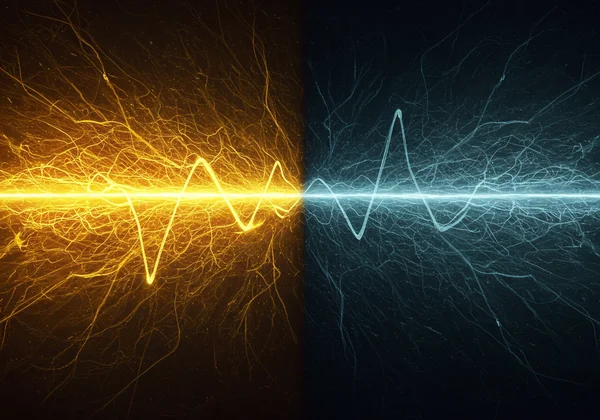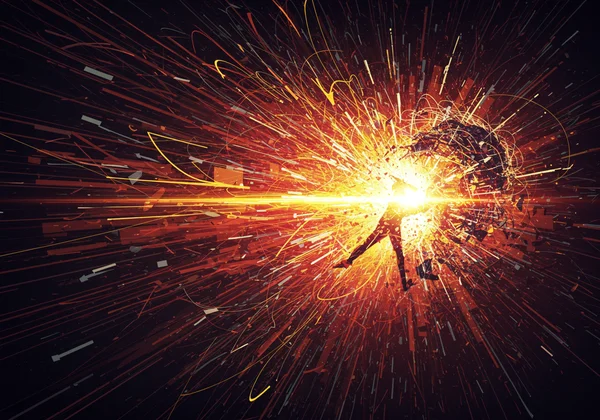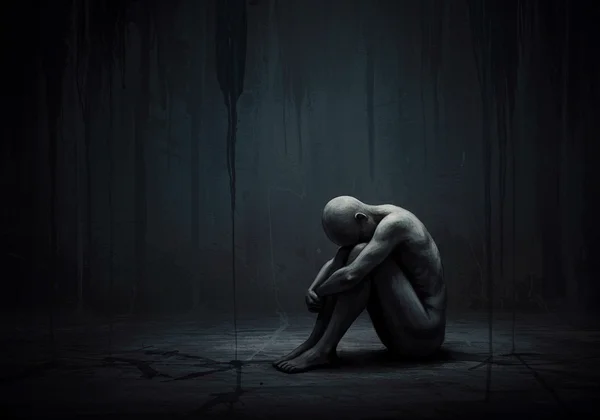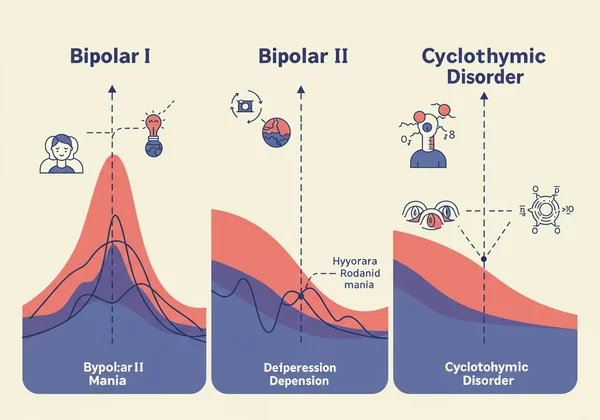Bipolar Test: Symptoms, Types, & What They Feel Like
Are you experiencing intense mood swings that disrupt your life, leaving you confused and seeking answers? Perhaps you've found yourself soaring with boundless energy one moment, only to plunge into deep despair the next. It’s natural to wonder, Am I bipolar or just moody? This guide will help you understand the common bipolar symptoms and different bipolar types, offering clarity on what these experiences truly feel like. Discover if your feelings align with bipolar patterns and what steps you can take next to find insights. Many people find their initial clarity by taking a confidential and free bipolar assessment online. If you're ready to explore your mood patterns, consider taking our free bipolar test on our platform.
Understanding Bipolar Symptoms: What to Look For
Bipolar disorder is characterized by significant shifts in mood, energy, activity levels, and concentration. These shifts are known as mood episodes, which can be manic, hypomanic, or depressive. Recognizing these patterns is the first step towards understanding your experiences.

Recognizing Manic & Hypomanic Episodes
Manic episodes are periods of abnormally elevated, expansive, or irritable mood and increased energy or activity. To truly understand what does a manic episode feel like?, imagine a powerful surge where thoughts race, ideas overflow, and you feel incredibly confident and capable. You might sleep very little but feel fully energized, talk rapidly, or engage in risky behaviors. It's often described as being "on top of the world," but this can quickly turn to extreme irritability or agitation.
Hypomanic episodes are similar to manic episodes but less severe and generally do not cause significant impairment in daily functioning or require hospitalization. The energy and mood boost can feel pleasant and productive, leading to increased creativity or social engagement. However, even hypomania can lead to poor judgment or uncharacteristic behavior, setting the stage for depressive crashes. Both can involve changes in sleep patterns, heightened activity, and quick shifts in topic during conversations.

Identifying Depressive Episodes in Bipolar Disorder
The flip side of mania or hypomania is the depressive episode. These periods are marked by a pervasive low mood, loss of interest or pleasure in activities, changes in appetite or sleep, fatigue, feelings of worthlessness or guilt, and difficulty concentrating. It's more than just feeling sad; it’s a profound sense of hopelessness and emptiness that can make everyday tasks feel impossible. For someone with bipolar disorder, these depressive states can be just as debilitating, if not more so, than the elevated mood phases. The duration of these episodes can vary significantly, sometimes lasting for weeks or even months.

Common Signs Beyond Mood Swings
While mood swings are the hallmark of bipolar disorder, other signs can indicate its presence. These might include changes in sleep patterns (insomnia during elevated moods, hypersomnia during depressive phases), shifts in energy levels, changes in activity, and noticeable alterations in thought patterns and concentration. For example, during a manic episode, you might find your thoughts racing, making it hard to focus on one task. During depression, even simple decisions can feel overwhelming. People might also experience changes in appetite, weight fluctuations, and noticeable shifts in their social interactions. If you’re considering an online bipolar test to gain insight into these patterns, our platform offers a helpful starting point.
Exploring the Different Bipolar Types: Bipolar 1 vs. Bipolar 2 & Cyclothymia
Understanding the specific type of bipolar disorder is crucial for proper management. The main categories include Bipolar I, Bipolar II, and Cyclothymic Disorder, each with distinct characteristics regarding the intensity and duration of mood episodes. Differentiating between bipolar 1 vs 2 is a common question.
Bipolar I Disorder: The Highs and Lows
Bipolar I Disorder is defined by the occurrence of at least one full manic episode. These manic episodes are often severe and may require hospitalization. Depressive episodes are also common in Bipolar I but are not required for diagnosis, although most individuals with Bipolar I will experience them. The intense highs and deep lows can severely impact daily life, relationships, and work. For those wondering, "How can I test if I am bipolar?" and suspecting the more severe manifestations, a comprehensive bipolar disorder test based on established criteria can provide initial insights.
Bipolar II Disorder: The Subtle Hypomania
In contrast, Bipolar II Disorder is characterized by at least one major depressive episode and at least one hypomanic episode, but never a full manic episode. The hypomanic periods are less intense than full mania, sometimes even feeling productive or enjoyable, which can make Bipolar II harder to recognize. People might seek help only during depressive phases, often leading to a misdiagnosis of major depressive disorder. Understanding this distinction is vital, as the treatment approaches can differ. Our bipolar assessment test is designed to help differentiate between these subtle nuances.
Cyclothymic Disorder: Chronic Mood Shifts
Cyclothymic Disorder is a milder, chronic form of bipolar disorder. It involves numerous periods of hypomanic symptoms and numerous periods of depressive symptoms over at least two years (one year for children and adolescents). The symptoms are less severe than those seen in Bipolar I or Bipolar II, but they are persistent and can still cause significant distress or impairment. It's often seen as a fluctuating, less intense version of the bipolar spectrum disorder, but it can still profoundly affect one's quality of life. Recognizing these chronic mood shifts is key.

What Bipolar Episodes Truly Feel Like
Beyond clinical definitions, understanding the subjective experience of bipolar episodes can provide profound insight. It’s about grasping the emotional and physical reality of these shifts.
The Experience of Mania and Hypomania
Imagine a feeling of unstoppable energy, as if every thought and idea is brilliant and urgent. During manic episodes, you might feel invincible, highly creative, and incredibly productive, but also extremely restless or irritable if anyone tries to slow you down. Sleep becomes optional, and your mind races with grand plans. While it can feel exhilarating, it’s often accompanied by poor judgment, impulsivity, and a disconnect from reality. Hypomanic episodes can offer a similar but more manageable boost, like a burst of energy and optimism that fuels productivity without derailing your life completely. However, even these subtle shifts can lead to overspending, impulsive decisions, or strained relationships. Many describe it as feeling "wired" or "supercharged."
The Reality of Bipolar Depression
The depressive pole of bipolar disorder is a stark contrast. This isn't just sadness; it's a profound, crushing emptiness. Bipolar depression test results often highlight feelings of hopelessness, severe fatigue, and a complete loss of interest in activities that once brought joy. Thoughts might slow down, or conversely, become consumed by self-criticism and despair. Concentration becomes nearly impossible, and even simple tasks can feel monumental. This deep despair can be isolating and may lead to thoughts of self-harm. Recognizing the unique depth of bipolar depression is crucial, as it often requires different treatment approaches than unipolar depression. If you're experiencing these profound lows, getting initial insights through a bipolar test online can be a gentle first step.
Understanding Bipolar Disorder: Your Path to Clarity
Understanding bipolar symptoms and bipolar types is a significant step towards self-awareness and seeking appropriate support. These insights are not a diagnosis but a valuable starting point for discussion with a mental health professional. Recognizing the patterns in your life is empowering, allowing you to advocate for your own well-being.
If this information resonates with your experiences, remember that you are not alone. Our free, confidential, and scientifically-based bipolar test is designed to provide immediate insights into your mood patterns. It's a non-judgmental space to explore your feelings and consider if further professional evaluation might be beneficial. Take the first step towards clarity and understanding by visiting our homepage today.
Frequently Asked Questions About Bipolar Symptoms & Types
What are 5 signs of bipolar?
Five common signs of bipolar disorder include:
- Extreme Mood Swings: Alternating between periods of intense high energy (mania/hypomania) and deep depression.
- Changes in Sleep Patterns: Significantly reduced need for sleep during elevated moods, or excessive sleep during depressive phases.
- Increased Energy & Activity: Feeling highly energized, restless, or driven during elevated moods.
- Impulsivity or Risky Behavior: Engaging in uncharacteristic actions, spending sprees, or reckless decisions during manic/hypomanic episodes.
- Loss of Interest/Pleasure: A profound lack of enjoyment in activities, even hobbies, during depressive periods. If these signs sound familiar, you can get instant insights through our bipolar screening test.
Am I bipolar or just moody?
The key difference lies in the intensity, duration, and impact of the mood shifts. Everyone experiences everyday mood swings. However, bipolar disorder involves distinct mood episodes that are significantly more severe than typical ups and downs, last for days or weeks, and profoundly interfere with daily functioning, relationships, or work. If your "moodiness" feels uncontrollable and causes significant problems in your life, exploring whether it aligns with bipolar patterns through a structured self-assessment, like an online bipolar assessment, can be a useful first step.
What is the difference between bipolar 1 and 2?
The primary distinction between bipolar 1 vs 2 lies in the nature of the elevated mood episodes. Bipolar I Disorder involves at least one full-blown manic episode, which is severe and often requires hospitalization. Bipolar II Disorder involves at least one major depressive episode and at least one hypomanic episode (a milder form of mania) but never a full manic episode. While both types experience depression, the manic intensity is the defining difference. Learning more can help you decide if a bipolar 2 test or a broader assessment is right for you.
What does a manic episode feel like?
A manic episode can feel like an incredible surge of energy and euphoria. You might feel overly confident, have racing thoughts, speak very rapidly, and have a diminished need for sleep. There's a sense of invincibility and heightened creativity. However, this high can also turn into extreme irritability, agitation, and impulsive, reckless behaviors that have significant negative consequences. It's a powerful and often overwhelming state that can feel exhilarating but is fundamentally disruptive to rational thought and behavior. If you've experienced these intense highs, our bipolar test offers a confidential space to reflect on these experiences.
Disclaimer: This content is for informational purposes only and does not constitute professional medical advice, diagnosis, or treatment. Always seek the advice of your physician or other qualified health provider with any questions you may have regarding a medical condition.